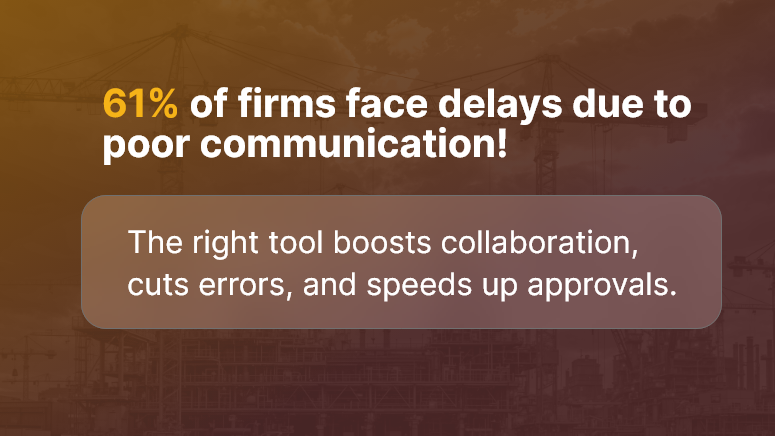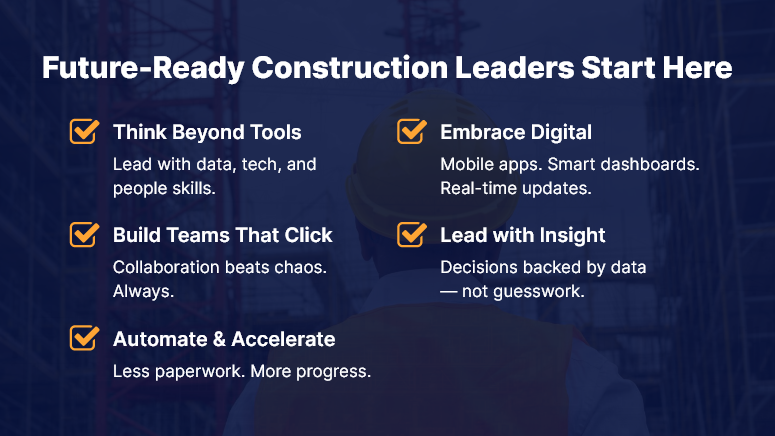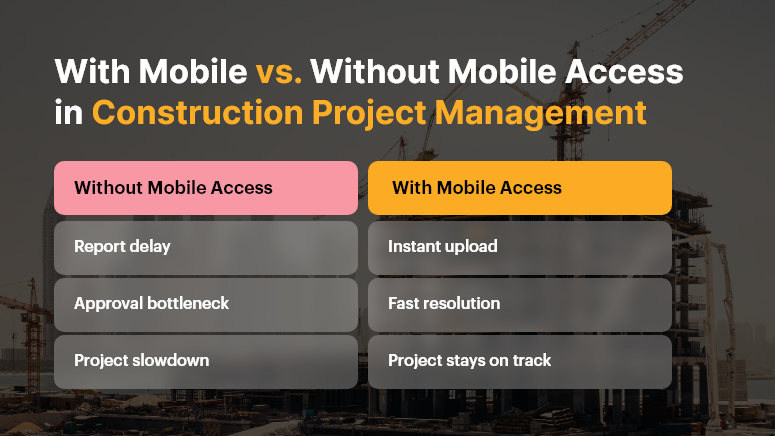Managing construction projects is complicated, managers need to handle numerous stakeholders, dependencies, and deadlines which can make managing construction projects a challenge.
This demands a more efficient and transparent approach to managing projects. Traditional project management methods just don’t cut it.
You need construction project management software with real-time reporting. This feature redefines how construction projects are managed.
In this blog, we will explore why real-time reporting is not just a choice but a necessity. This will enable you to stay ahead of the challenge and deliver projects successfully.
What Is Real-Time Reporting?
Real-time reporting is all about making project data and updates accessible across a centralized platform. It provides stakeholders with updated insights on each aspect of project development – all in real-time.
Instead of relying on spreadsheets or weekly reports, project managers and team members will be able to make informed decisions on the go.
Construction management software like OConstruction integrates with mobile apps, IoT devices, and cloud-based systems to deliver seamless actionable insights.
The Challenges of Traditional Reporting Methods
Before understanding the real value of real-time reporting, it’s essential to recognize the limitations of traditional reporting methods.
- Delays in Information: Weekly or monthly reports result in outdated data which cannot provide an accurate forecast of strategies and plans. This can lead to delays in identifying and addressing issues.
- Fragmented Data: When data is stored across multiple platforms or apps like spreadsheets it makes it difficult to get a comprehensive view of the project.
- Communication Gaps: Manual reporting can cause miscommunication among stakeholders which can lead to errors and rework.
- Increased Risk of Errors: Manual data entry increases the possibility of human errors which can disrupt the data and therefore the project itself.
- Reactive Decision-Making: Without timely insights, project managers have to anticipate changes in the project and oftentimes react to problems instead of proactively addressing them.
Why Real-Time Reporting Is Essential for Construction Projects

1. Enhanced Decision-Making
Real-time reporting enables project managers with accurate and up-to-date data thereby enabling them to make informed decisions faster. It’s about reallocating resources, adjusting schedules, and addressing safety concerns faster.
2. Improved Transparency and Accountability
Construction project management software like OConstruction keeps all the stakeholders in the loop thereby fostering transparency and ensuring that everyone has access to the same information.
This reduces misunderstandings and keeps each party accountable for their responsibilities.
3. Faster Issue Resolution
It also facilitates faster problem solving such as equipment failures, material shortages, and design discrepancies. Real-time reporting ensures they are flagged immediately.
Faster identification enables team members to resolve issues before they escalate and minimize delays or cost overruns.
4. Accurate Progress Tracking
Real-time dashboards in Construction project management software like OConstruction can show real-time data on project milestones, task completion, and overall progress of the project.
This clarity ensures that projects stay on track and allow project managers to adjust timelines when needed.
5. Cost Control and Budget Management
Budget is yet another significant aspect of construction project management. Project managers get real-time updates on expenses, and can monitor budgets more effectively.
Early detection of cost overruns enables faster corrective action and facilitates the project to remain within the budget limits.
6. Better Collaboration Across Teams
Real-time reporting also breaks down silos which provide a centralized platform for sharing information.
Teams from different locations can collaborate more effectively and ensure that the project is aligned with the requirements thereby reducing redundancies.
7. Proactive Risk Management
Construction projects are inherently risky because of factors such as weather, supply chain disruptions, and labor costs.
Reporting and real-time metrics let you identify potential risks early. This allows managers to implement mitigation strategies before they impact the project.
Statistics That Prove the Value of Real-Time Reporting
According to McKinsey, large construction projects typically take 20% longer to finish and run up to 80% over budget due to poor planning and reporting.
Dodge Data & Analytics reports that 61% of contractors using real-time project management tools saw improved schedule adherence.
A survey by FMI revealed that companies leveraging real-time data improved labor productivity by 14% and reduced rework costs by up to 5%.
70% of project delays could be avoided with better real-time visibility and reporting (KPMG).
Case Study: Real-Time Reporting in Action
Project: A mid-sized infrastructure company managing a $50M highway construction project.
Challenge: The company faced frequent delays due to material shortages and poor communication between contractors and subcontractors. Reports were consolidated weekly, leading to delayed issue resolution.
Solution: The company implemented OConstruction’s real-time reporting software. Field teams updated progress directly from mobile devices, while IoT sensors tracked equipment usage. Automated alerts flagged potential material shortages in advance.
Results:
- Reduced project delays by 25%.
- Cost overruns cut by 15%.
- Stakeholder satisfaction improved due to transparent communication.
- The project was delivered three weeks earlier than scheduled.
Key Features of Real-Time Reporting Tools in Construction
To fully leverage the benefits of real-time reporting, construction project management software should include the following features.
- Live Dashboards: Centralized dashboards can display key metrics such as project progress, budgets, and resource allocation to project managers.
- Mobile Accessibility: Mobile-friendly platforms ensure that the on-site teams can input and access data from anywhere.
- Integration with IoT Devices: IoT devices can use sensors to provide real-time updates on equipment usage, environmental conditions, and worker safety.
- Automated Alerts and Notifications: Immediate alerts can create scheduled deviations, budget overruns, and compliance issues to keep stakeholders informed.
- Customizable Reports: Customized reporting options let you meet the unique needs of different projects and stakeholders.
- Cloud-Based Storage: Secure cloud-based systems also enable data to be accessed and shared in real-time across multiple locations.
How Real-Time Reporting Impacts Stakeholders
- Project Managers: Real-time reporting enables project managers to keep control over every aspect of the project, thereby ensuring timely completion and optimal resource utilization.
- Contractors and Subcontractors: Contracts and subcontractors can monitor task assignments, resource availability, and equipment usage in real-time, thereby reducing downtime and ensuring efficiency.
- Clients: Clients get a transparent view of the project’s progress thereby fostering trust and reducing disputes.
- Field Teams: On-site teams can easily report progress, flag issues, and access critical information instantly, thereby improving productivity and communication.
- Compliance Officers: Real-time reporting ensures compliance with safety regulations and industry standards, which reduces risks and avoids penalties.
The Future of Real-Time Reporting in Construction
- As technology continues to evolve, real-time reporting is becoming more comprehensive and simplified.
- The integration of AI and predictive analytics enables forecasting potential risks and optimizing resource allocation.
- Wearable devices and drones also enhance real-time data collection and can generate even the most minute insights into on-site conditions.
- Moreover, 5G connectivity will revolutionize real-time reporting by enabling faster data transmission even in remote construction sites.
- These advancements will further empower businesses to deliver projects faster and with greater efficiency.
Final Thoughts
Real-time reporting is no longer a choice but a necessity for modern-day projects. Providing instant access to critical data can empower the team to make informed decisions which can improve collaboration and ensure that the project is delivered on time and within budget.
Integrating construction project management software and other reporting tools is an investment in efficiency, transparency, and long-term success.
Are you ready to transform your construction projects with real-time reporting? Let’s start building the future, one data-driven decision at a time.
Frequently Asked Questions
Q1. How does real-time reporting differ from traditional reporting?
Real-time reporting delivers instant updates and dashboards, unlike traditional weekly/monthly reports that often contain outdated data. It ensures decisions are made proactively, not reactively.
Q2. Is real-time reporting expensive to implement?
Not necessarily. Cloud-based construction management tools like OConstruction scale with your needs. The investment often pays off by reducing rework, avoiding penalties, and improving productivity.
Q3. How does it help with compliance and safety?
Real-time reporting integrates with IoT sensors and safety checklists, ensuring immediate alerts for compliance issues, worker safety breaches, or regulatory deviations.
Q4. Can small construction firms benefit from it?
Absolutely. Even small firms face risks like delays and cost overruns. Real-time reporting helps smaller teams manage resources effectively and stay competitive.
Q5. Does real-time reporting replace project managers?
No. It empowers them. The technology provides instant insights, but human judgment and leadership remain critical to project success.









